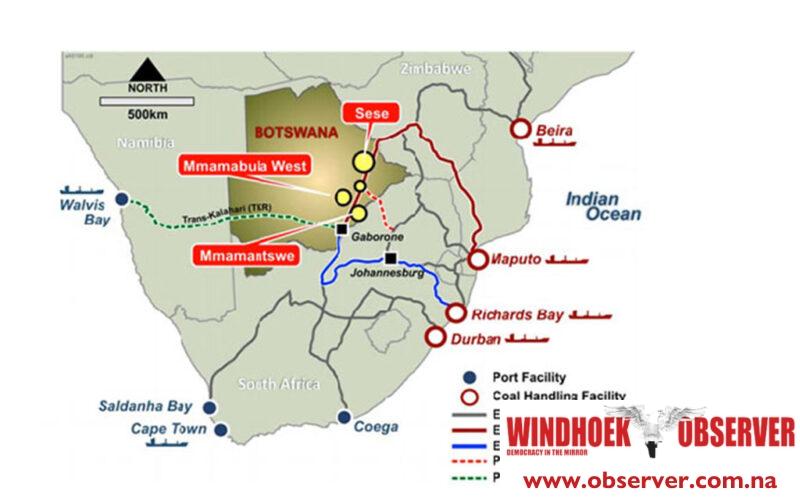The Trans-Kalahari Railway Project Management Office (TKR-PMO), has invited proposals for consultancy services for the development of a comprehensive request for proposal (RFP) document for the Trans Kalahari Railway Project.
The Trans-Kalahari Railway Project (TKR) is a bilateral project between and Botswana and Namibia. The initial objective of the project was to construct a railway line (heavy haul) linkage between the two countries to transport coal and other commodities to the overseas market, through ports in Namibia.
Botswana and Namibia commenced the discussions in 2010 as signified by the Memorandum of Understanding (MOU). A prefeasibility study, regarding this project, was undertaken by CPCS Transcom International Limited (Canada) in 2009 and was completed in 2011. The anchor commodity at the time of the prefeasibility study was coal.
The pre-feasibility study concluded that the project was feasible subject to findings a detailed feasibility study. The two countries signed the bilateral agreement on the project was signed in 2014.
The key components of the TKR project are to construct a railway line from the port around Walvis Bay in to the coalfields at Mmamabula in Botswana, complete with rolling stock, locomotives and wagons and maintenance facilities.
The project also plans to construct a terminal where trains will be off-loading coal to enable loading on ships at Walvis Bay and a conveyor-belt system to connect the coal terminal to enable conveyance of coal from the terminal for loading into ships in the port.
Other plans include the construction of loading facilities at the port, drenching of the port and other necessary port infrastructure developments as well as equipment. Coal loading facilities will be constructed around Mmamabula area, catering for coal.
According to the railway route alignment that was agreed by the two countries, in Botswana the project will start at Mmamabula coal fields, thereafter, connecting to and following the existing railway alignment up to Rasesa, where it will deviate to the west, passing north of Molepolole and South of Letlhakeng, and joining the Molepolole – Kang Road at Maboane, thereafter aligning to the Molepolole – Kang Road until Morwamosu, where it will connect to the Trans-Kalahari Corridor through the Border to Mamuno Border.
In Namibia, it shall follow the Trans-Kalahari Corridor past Gobabis, through Omitara where it will deviate to the west, and realign to the Trans-Kalahari Corridor at Okahandja onwards to Walvis Bay. Namibia and Botswana have agreed to construct a Cape Gauge Railway Line.




